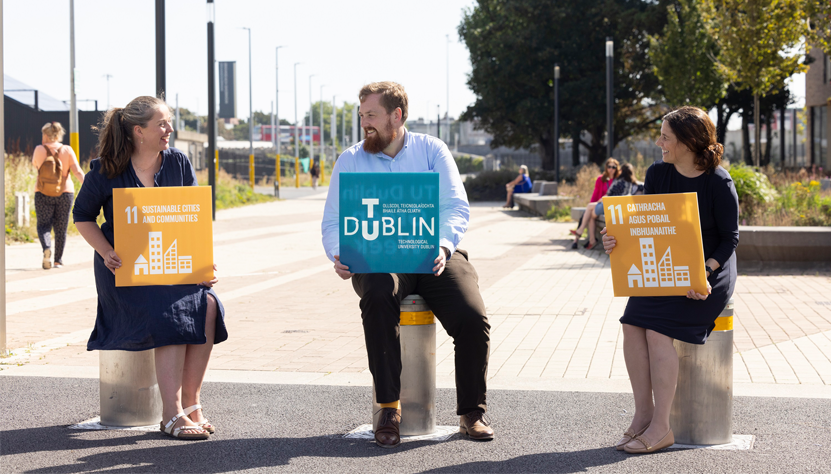CRAWL – Campus’ Role as Actors in Walkable and Liveable Communities

CRAWL is funded under the Science Foundation Ireland’s (SFI) National Challenge Fund Sustainable Communities Challenge and supported by the Office of the Planning Regulator as our Societal Impact Champion. CRAWL aims to engage TU Dublin’s community and campus stakeholders in order to understand barriers and provide opportunities to make campuses and their surrounding neighbourhoods more walkable and liveable.
Why is it important?
Since the 1960s, development patterns changed to a more suburban car-based approach for street and neighbourhood design. As we moved to this more suburban design, our university campuses followed suit (UCD, DCU, UL, technological universities) and now we have challenges that include the physical and social health of students, and transport poverty (financial costs and time costs) due to long commute times and limited public transport options for travelling to campuses. Campuses can also be recreational amenities for surrounding neighbourhoods. Key to an individual’s decision to walk in their neighbourhood is their perception of safety, security and comfort. The social environment as well as the physical characteristics of a place will influence an individual’s sense of belonging and is based on their own user associations, backgrounds and cultural factors. Finding opportunities to improve suburban campuses can have transferability of good practice to other suburban campus settings including employment and healthcare.
Using TU Dublin’s campus locations as a testbed, the research team will draw upon the expertise of an already established multidisciplinary national advisory committee on walking and liveable communities to work with campus communities, local authorities and stakeholders from surrounding neighbourhoods to create action research programme to increase the walkability and liveability of the campus neighbourhoods. Increased walking and the resulting social interactions have benefits for population and planetary health and are essential for children and older people’s independent mobility and a well-functioning public transport system. Identifying barriers and co-creating contextual solutions to be evaluated with community stakeholders will inform practice in this multidisciplinary space. An air quality monitoring project will be set up by the research team as an anchor for engagement and community stakeholder recruitment. This topic has been selected as it is relevant as both an outcome (tailpipe emissions) and a determinant of people’s walking/ mobility behaviours (discomfort when walking when air quality is bad).
